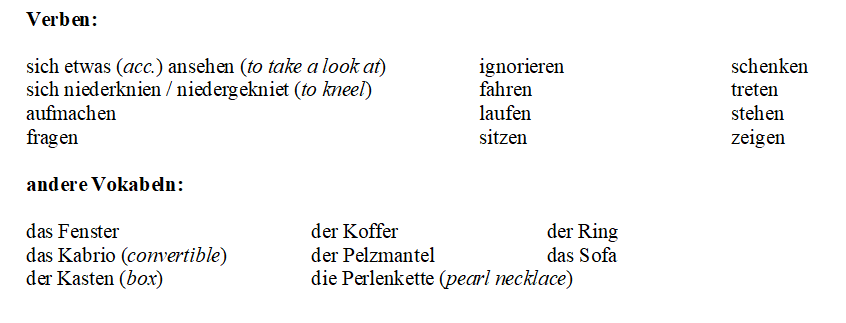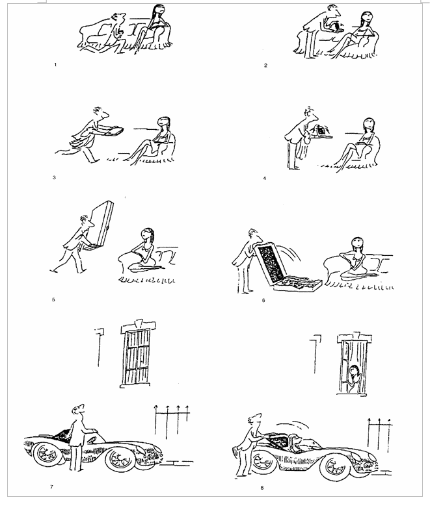Each of the following sentences contains a blank where a verb should be. Choose the letter (A, B, or C) that is followed by the correct form of the verb for the sentence to make sense. A cold December wind _____ right through our bones as we walked in the snow
a. blew
b. blow
c. blown
a
You might also like to view...
Answer the following statement(s) true (T) or false (F)
1. Negative phrasing is easier to understand than affirmative phrasing. 2. Visuals in instructions should repeat, restate, or reinforce the prose. 3. Procedures are a type of instructions. 4. A usability study is appropriate for procedures but not instructions. 5. Increasingly, companies offer smaller print manuals and more detailed user instructions on Web sites.
Die Überraschung. Erzählen Sie die Bildgeschichte und verwenden Sie dabei alle Verben aus der Liste. Verwenden Sie in mindestens zwei Sätzen ein Verb im Plusquamperfekt. Schreiben Sie zu jedem Bild mindestens einen Satz.


Die Überraschung
_____________________________________________________________________________
_____________________________________________________________________________
_____________________________________________________________________________
_____________________________________________________________________________
_____________________________________________________________________________
_____________________________________________________________________________
_____________________________________________________________________________
_____________________________________________________________________________
_____________________________________________________________________________
_____________________________________________________________________________
_____________________________________________________________________________
_____________________________________________________________________________
Which of the following transitional expressions would best join these two sentences? I am not going to your brother's Christmas party. I am not having a Christmas party at my house
a. subsequentlyb.otherwisec.of coursed.thuse.furthermore
Each word group in the student paragraph below is numbered. In the space provided, write C if a word group is a complete sentence; write F it if is a fragment. You will find ten fragments in the paragraph.
Calling In Sick 1It takes skill to call in sick to work with a phony excuse. 2And not sound like a faker. 3First of all, one must be sure to speak directly to the boss. 4Not to a co-worker or secretary. 5If a person talks to a co-worker who doesn’t like him or her. 6The co-worker may “forget” to give the boss the message. 7Making the person look totally irresponsible. 8Or the co-worker may tell the boss, in a sarcastic tone, “Terry is sick again.” 9Transmitting the message that this is definitely a fakery. 10Second, being careful not to ruin the excuse by overacting or exaggerating. 11For example, coughing on the phone like a tuberculosis victim or sneezing after every word. 12Also, it’s important not to claim that this is a complicated disease. 13Such as bronchitis combined with pneumonia. 14A simple excuse sounds more truthful, so it’s worth sticking with the flu or a stomach virus. 15The most important technique involved in calling in sick is making sure one doesn’t get caught. 16The person must, for instance, be willing to stay home all day. 17So that a co-worker can’t say, “I tried to reach him, but he doesn’t answer.” 18And it’s critical to never return to work after sick leave with a suntan or an ankle broken while skiing. 19If a person follows these tips when calling in sick. 20No one can accuse him or her of “faking it.” 1. _____ 2. _____ 3. _____ 4. _____ 5. _____ 6. _____ 7. _____ 8. _____ 9. _____ 10. _____ 11. _____ 12. _____ 13. _____ 14. _____ 15. _____ 16. _____ 17. _____ 18. _____ 19. _____ 20. _____